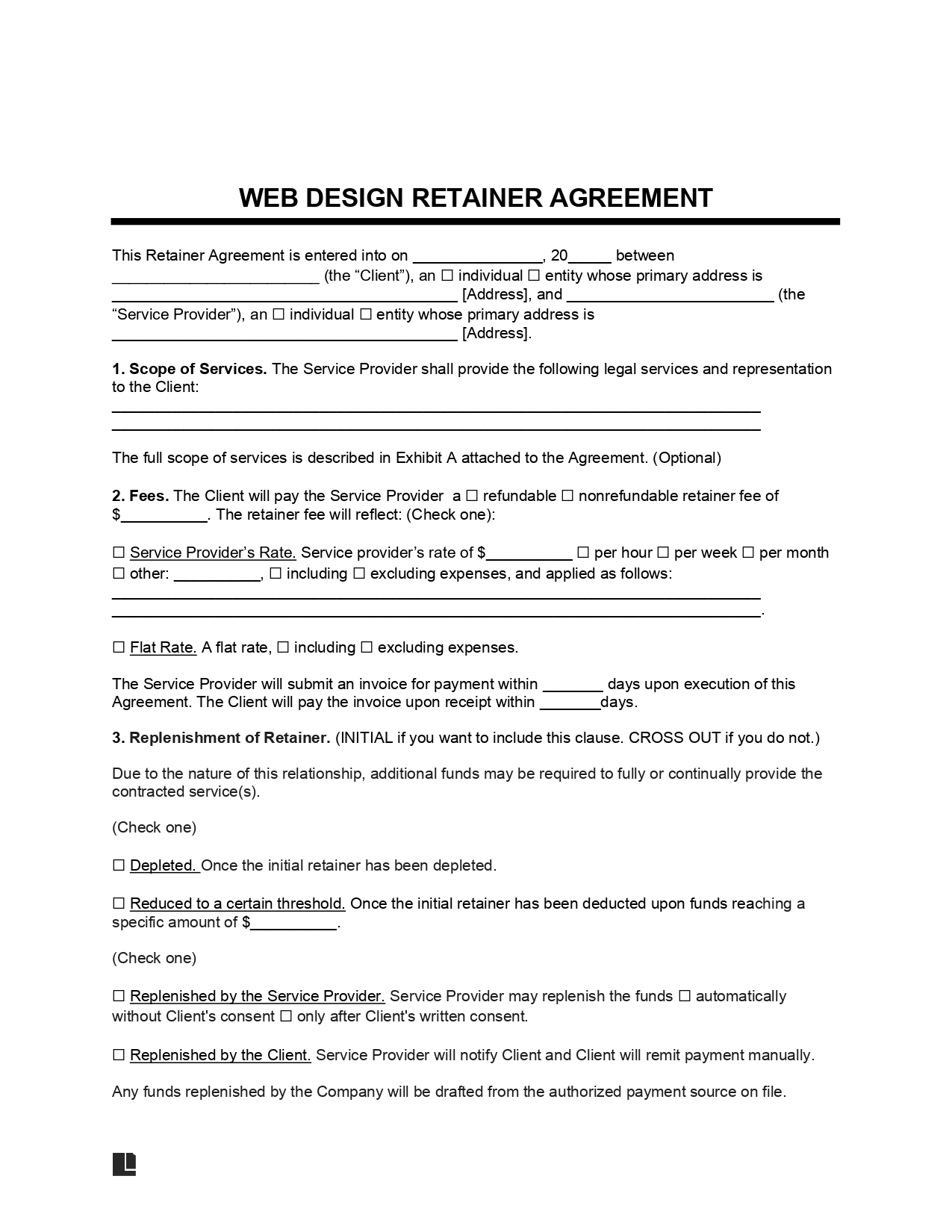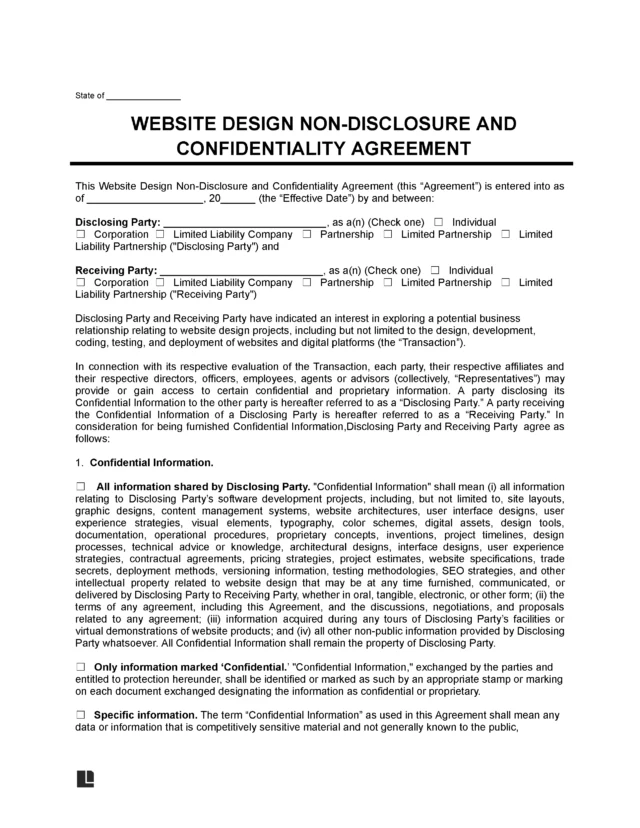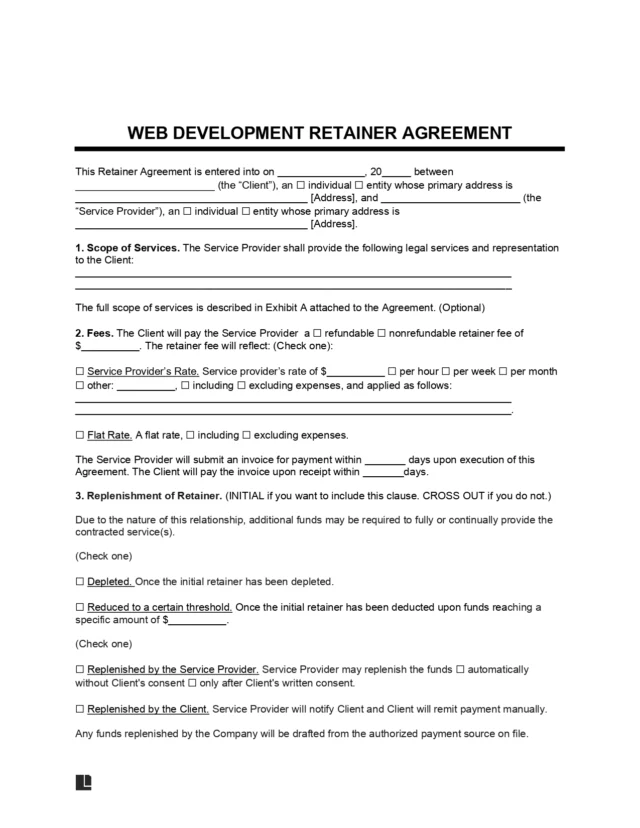What Is a Web Design Retainer Agreement?
A Web Design Retainer Agreement is a way for business owners to hire a web designer by paying them a retainer fee in advance. This arrangement covers the website’s development, maintenance, updates, technical support, and bug fixes.
How Much Should I Charge for a Web Design Retainer?
Web design retainer fees depend on the designer’s expertise, the website’s scope, and the project’s complexity. Experienced web designers, large projects, and complex websites require higher retainer fees.
As a web designer, you should list all the tasks you expect to do to determine how much you should charge for a web design retainer. You should discuss these upfront with your client.
What Is a Web Design Retainer?
A web design retainer lets business owners reserve a web designer’s services by paying them in advance. Unlike a one-time web design contract, it establishes an ongoing relationship between the client and designer. This ensures quick bug fixes and design consistency.
When You Need a Web Design Retainer
Business owners require web design retainer contracts when they don’t have the time, energy, or expertise to manage the website by themselves. After the initial launch, the web designer will manage, update, and edit the website.
Web designers need web design retainers to ensure their business has regular revenue. Without retainers, designers must spend additional time identifying and attracting new clients.
The Benefits of Working on a Retainer
Hiring a web designer on retainer means more time for a business owner to focus on their business. Without a retainer, they would need to sign a new contract for every website update.
Web designers experience several benefits of working on a retainer, including:
- Generate more revenue: Retainers can create a steady income stream.
- Building deeper relationships with clients: Web designers can gain deeper insight into clients’ businesses when working on retainers with them for long periods.
- Weed out low-quality clients: Reputable corporate clients usually prefer to hire web designers on retainers since they have the money and resources to do so. In contrast, less reputable clients typically do not hire designers on retainer.
What Does a Web Design Retainer Typically Include?
A web design retainer typically covers the following:
- Scope of services: This section outlines what services the web designer will provide. Common examples include web development, bug fixes, updates, and maintenance.
- Fees: This section outlines the web designer’s retainer fees, which can reflect the designer’s hourly, weekly, or monthly rate or a flat rate.
- Replenishment of retainer: If the designer requires additional retainer funds for specific service(s).
- Term and termination: This states when the agreement will start and end. Depending on the parties’ needs and preferences, the agreement can terminate after the designer completes all of the services, after a fixed period, on a specific date, or at will.
- Confidentiality: This section ensures the web designer maintains the confidentiality of all company information while working for the client. It also states that all work done by the web designer is for hire, and all rights belong to the client.
- Governing law: Parties choose where disputes will be settled.
- Severability: If a court finds any part of this agreement invalid under the laws of the chosen jurisdiction in the “Governing law” section, it will not affect the validity of the other parts and provisions.
- Entire agreement: This section reminds both parties that this contract is the entire agreement and voids all previous arrangements, discussions, and agreements. Modifications to this contract are only valid if done in writing and signed by both parties.
How to Pitch Retainers to Existing Clients
Starting a client relationship with a retainer can be challenging. You should only pitch retainers to existing clients familiar with your work.
Follow these steps to pitch retainers to existing clients:
- Pick a client with whom you have a strong relationship. These clients are more likely to react positively to your pitch.
- Finish some one-off projects to earn more of your client’s trust.
- Propose additional, long-term services. For example, suppose you finish a website and create social media accounts for a client, and they pay you for a job well done. You could then offer to extend your services to digital marketing management, content creation, and social media management.
- Suggest a trial period if the client is reluctant to commit to a long-term agreement. The length of the trial period will depend on the services you are pitching. Usually, trial periods are longer for more expensive and time-consuming services.
Web Design Retainer Agreement Sample
Create a web designer retainer agreement using our Word and PDF template:




